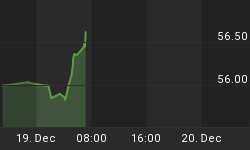On May 6 with the S&P 500 trading at 1,369, we presented evidence of slowing bullish momentum. Thus far, we have seen little in the way of hard evidence to suggest a bottom was reached last Friday. However, we have seen enough to suggest remaining open to a bottoming process unfolding over the next one to three weeks.
The global markets continue to monitor the battle between inflationary forces (money printing, deficit spending) and deflationary forces (writedowns and defaults). You need to look no further than the $16 drop in gold Wednesday morning to understand the markets continue to bet on deflationary outcomes in the short-to-intermediate term. Said another way, the market is not expecting bold moves from the ECB this week or a sudden change of heart in Germany.
Not surprisingly, Germany has tempered the market's expectations for significant policy initiatives coming from Europe this week. From the Wall Street Journal (WSJ):
Enthusiasm for the EU summit, partly responsible for some of the gains in global markets in the last two sessions, started to diminish following press reports stating that Germany has refused to share the debt burden of stressed euro-zone peers by ruling out common euro zone bonds.
In a separate article, the WSJ reminds investors the divide between Germany and the "let's jointly borrow, spend, and print our way out of this" clan remains significant:
European leaders meeting here Wednesday are expected to back a package of initiatives to jumpstart growth across the flagging euro zone. But the planned display of harmony masks deep divisions within the currency bloc over more aggressive steps many policy makers believe must be adopted if the euro is to survive. At issue are radical reforms to the euro-zone's architecture, from common bond issuance to a more potent bailout fund.
Based on Tom DeMark's exhaustion counts, we have to be open to a bottom forming in stocks relatively soon (see video below for more details). However, we also have to respect that a more significant shift could be taking place in global trends. Relative to a possible bottoming process, European financial stocks are worth monitoring. Financials in Europe have been leaders on the downside since peaking in mid-March.
If the chart below of European financial stocks breaches the December 2011 low, it will mark a critical point for all risk assets. The break alone would not side 100% with the bears. Remember, the S&P 500 made a new intraday low in October 2011, but that low marked a bottom, not an acceleration of the downtrend. From where we sit, it is best to keep an open mind and see how it plays out, rather than anticipate what a possible new low in European financials would mean.

In a popular October 2011 video, we expressed doubts the ECB's unlimited three year loans to European banks would "solve" the problem of too much debt. The chart above also questions the effectiveness of the ECB's radical printing experiment. Bloomberg raises fundamental issues concerning the preparedness of European banks should Greece exit from the common currency (FXE):
Europe's banks, sitting on $1.19 trillion of debt to Spain, Portugal, Italy and Ireland, are facing a wave of losses if Greece abandons the euro. While lenders have increased capital buffers, written down Greek bonds and used central-bank loans to help refinance units in southern Europe, they remain vulnerable to the contagion that might follow a withdrawal, investors say. Even with more than two years of preparation, banks still are at risk of deposit flight and rising defaults in other indebted euro nations.
The immediate risk for Europe's banks, and for the euro region, would be a deposit flight from indebted nations such as Portugal, Ireland, Spain and Italy on speculation those countries also might quit the currency.
The May 22 video below covers Fibonacci retracement levels, trends, support, and DeMark charts (day, week, month) for the Vanguard All-World Stock Index ex-U.S (VEU). At some point, if foreign stocks remain entrenched in a downtrend, you have to question how long the S&P 500 can remain on a bullish island. The point for U.S. investors is the path overseas seems to be gravitating toward two somewhat binary outcomes over the next two to three weeks.
- A bottoming process similar to what the S&P 500 experienced in October 2011 or
- An acceleration of declines similar to what global markets experienced in June 2008.
DeMark indicators are proprietary tools from Market Studies, LLC.

Since there are so many unknowns starting with Greece's "should we stay or should we go" dilemma, we are open to bullish or bearish outcomes. We are willing to add to our heavy cash position and we are open to redeploying cash fairly rapidly should the bottoming process scenario rule the day.















